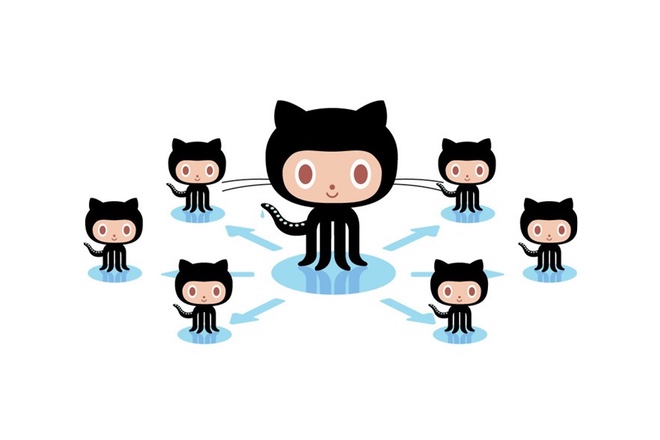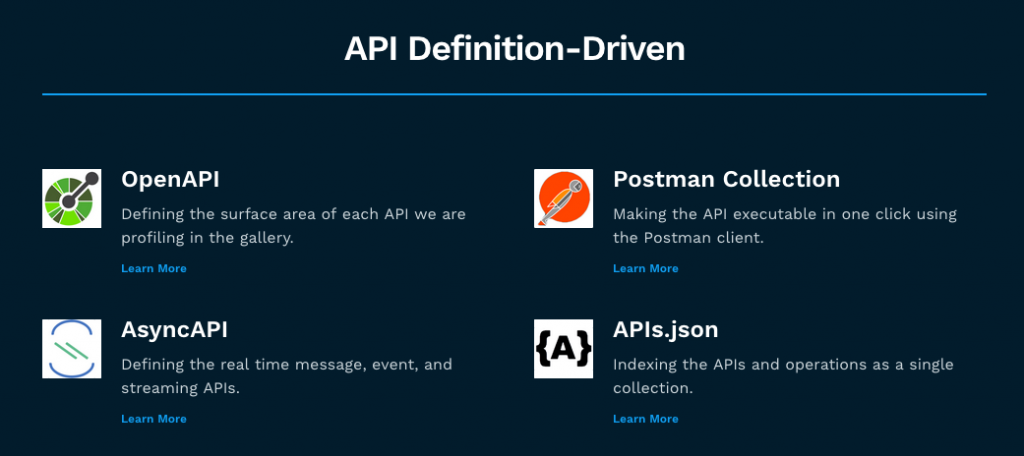We’ve invested a lot into the architecture behind the Streamdata.io API Gallery. It may not look much different than other API directories, catalogs, and galleries, but underneath its facade is a continuously deployed and integrated API discovery engine. We intentionally engineered the API gallery as a distributed set of GitHub repositories so that it can be forked, made public or private, and deployed wherever it is needed.
All APIs are defined using OpenAPI and Postman Collections, providing a machine-readable definition for all APIs in the gallery. APIs are organized by entity or topic, with each one possessing its own GitHub repository, which allows for a single entity or topic to be checked out, forked, and continuously deployed or integrated separately from each other. The Streamdata.io API gallery currently consists of over 300 separate entity repositories, and over 400 separate topic repositories, within two separate GitHub organizations–with another 2,000 entity repositories waiting in the background to be profiled, and published.
The Streamdata.io API Gallery is the first API discovery engine to work like this. The goal is to make ALL public APIs discoverable via GitHub, and common search engines. Then allow their machine-readable definitions to be forked and consumed wherever they are needed. Allowing all the APIs that are profiled and published to be integrated into existing applications, and be used to train machine learning models. Similar to each individual entity or topic existing within separate repositories, we’ve also broken down each individual path as its own OpenAPI definition and Postman Collection, distilling down each one to its smallest possible unit of compute or data resource for easy consumption and integration
We are working hard to profile as many APIs as we can each week, and publish to the gallery. It is easier when APIs already have OpenAPI definitions, but even if they don’t we work to harvest their documentation and publish as machine-readable definitions. Eventually, we’d like to make the gallery something that companies, organizations, institutions, and government agencies can use to build their own machine readable API discovery engines, either within their firewalls or externally for partners and the public. Allowing them to catalog their own APIs and microservices, as well as use the APIs we’ve already cataloged. If you have an API you’d like to have listed in the gallery please let us know, we are happy to add it. Also, if you are looking to invest in API discovery within your organization, let us know, we are happy to help you put the architecture behind the Streamdata.io API Gallery to work for you–it is all open source, and easy to deploy in the cloud or on-premise.


Follow us on social